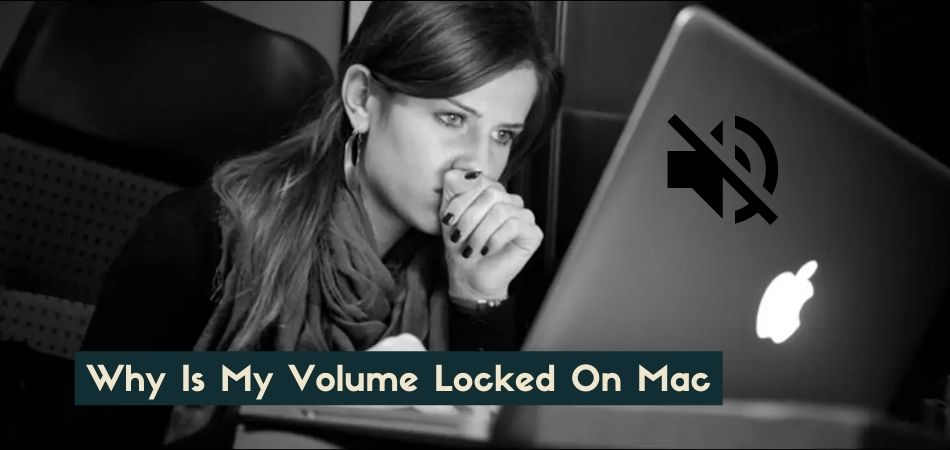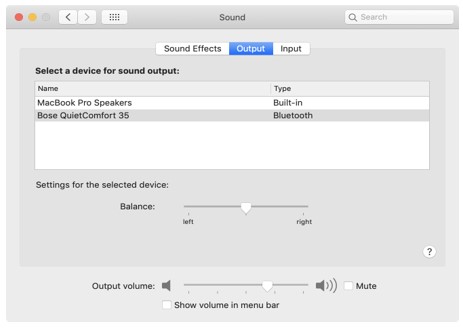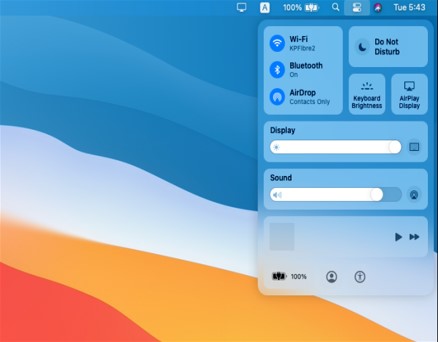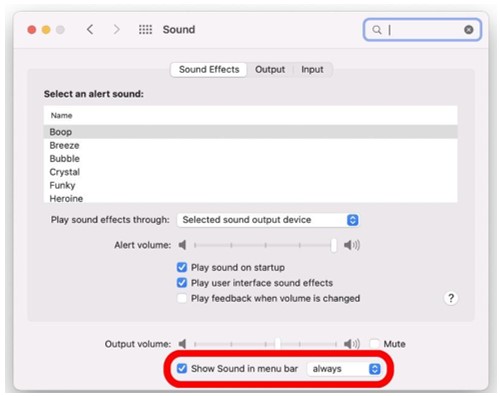
For many years Apple has continued to provide its users with powerful computers through its line of Macs. However, volume issues and bugs have become common with these machines. It mostly occurs after performing an operating system update or plugging an external audio device. This leaves most users wondering, why is my volume locked on Mac?
The issue of Mac volume locking can be because of dirt accumulation in the headphone port, incorrect sound settings, or disabled internal speakers. Press F12, F11, or F10 on your keyboard to unlock for it to increase, decrease, or mute.
Having a locked volume on Mac can be aggravating, especially if you have an online meeting or class to catch. You are here probably because you have encountered a frustrating moment where your Mac volume controls appear grayed out. This article takes you through easy tips to help fix a locked volume on your Mac. Keep reading to find out more.
Quick Navigation:
- Why Is My Volume Locked on Mac?
- What To Do If Your Mac Sound Is Not Working?
- Where Is The Volume Control On My Mac?
- How Do I Turn On The Volume Control On My Mac?
- How To Fix Volume Locked On Mac?
- Final Thoughts
Why Is My Volume Locked On Mac?
Has your Mac suddenly gone silent? Don’t worry; it’s a common problem among Mac users. If the sound on your Mac has stopped working and the volume slider appears disabled, it means there is a problem with your audio settings. This could either be a software or hardware problem.

A hardware problem could be because of a damaged or dirty headphones port; when an external speaker or headphone jack is plugged in, it disables the volume controls. On the other hand, software problems could be because of a bug in a software update, incorrect sound settings, disabled internal speakers, etc.
The first simple diagnostic thing you should do is check that your audio settings are correct and that your volume is not muted. Go to [System Preferences], then click [Sound] and select [Output].
What To Do If Your Mac Sound Is Not Working?
You can perform a few troubleshooting procedures if your Mac sound is not working. However, the most basic procedure is to ensure your macOS version is up to date and check your Mac audio settings. Follow these steps to check your audio settings:
- Step 1: From the apple logo on the top left corner of your screen, choose [System Preference].
- Step 2: Click [Sound].
- Step 3: Click the [Output] tap and select [Mac built-in speakers].
- Step 4: If the output volume slider is on the left side of the bar, move it to the right and test your Mac sound again.
- Step 5: If the [Mute] checkbox is checked, uncheck it and test your Mac sound again.
- Step 6: If your Mac sound is still not working, consider trying out advanced troubleshooting or contact Apple support.
See Also: Why Is My Mac Volume So Low?
Where Is The Volume Control On My Mac?
The volume control on Mac is found in the system preferences under the sound options. You can also find it as a shortcut in the control center in the menu bar. Here is how to access it:
In the system preference
- Step 1: Click the Apple logo on the top left corner of your screen.
- Step 2: Select [System Preferences] and then navigate to [Sound] and click.

- Step 3: Drag the slider labeled [Output Volume] to adjust your Mac volume or check the [Mute] box to mute.
In the control center
- Step 1: Click the [Control Center] buttons on the top right corner of your screen on the menu bar.
- Step 2: You will see the volume slider labeled [Sound]. Drag the slider to adjust your Mac volume.

How Do I Turn On The Volume Control On My Mac?
Surprisingly, there is no visible volume control on the menu in macOS. More or less, Apple wants Mac users to use function keys (F10, F11, and F12), Control Center, or the Touch Bar every time they want to adjust the volume. Thankfully, turning on the volume control on Mac is a relatively straightforward process. Here is how:
- Step 1: Launch [System Preferences].
- Step 2: Click [Sound].
- Step 3: Go to the Option [Show Sound in menu bar] at the very bottom of the window. Enable this Option and on the drop-down list, set it to [Always] as shown below.

How To Fix Volume Locked On Mac?
To fix locked sound on Mac, first, you need to play something with audio either in a music player or web browser to ascertain that there’s no sound, and then try these troubleshooting procedures:
1. Restart Your Mac
Restarting a system can help resolve a few issues, including locked sound/volume. Click on the Apple logo on the left side of the menu bar, then select [Restart].
2. Try A Different Application.
Sometimes you can accidentally mute or turn down the volume in a specific app you are using to play music. In this case, even if you adjust the main volume of your Mac, you’ll still hear no sound. For this reason, you should try using a different app. For example, if there’s no sound on YouTube in Safari, try playing YouTube in Chrome.
3. Reset NVRAM/PRAM
Speaker volume and other sound settings are usually stored in the NVRAM (on newer Mac models) and PRAM (on older Mac models). Resetting this memory may help resolve volume locked problems on your Mac. Here is how to do it:
- Step 1: Shut down your MacBook.
- Step 2: Press the power button to boot.
- Step 3: Press and hold [Command] + [Option] + [P] +[R] keys all together for about 20 seconds.
- Step 4: Release them and let your computer boot as usual. Your NVRAM/PRAM is now restored to the factory setting. You might also need to set the time, date, and other macOS settings.
4. Check The Audio Ports And Hardware
In some cases, you might verify all software features and still not detect any audio problem. You may also want to look at the hardware and your Mac ports. Disconnect any attached audio devices and clean your ports with a soft brush.
Check your Thunderbolt, USB, headphones, and HDM connections since they potentially affect your computer audio. Ensure cables have no problems such as fray or splits. Restart your Mac and reconnect your devices one by one. Each time you plug in a new device, test the sound by playing audio.
5. Reset Your Mac Core Audio Settings
If you are still experiencing trouble with locked volume, you can restore the low-level playback to default settings. The core audio is made up of multiple program frameworks capable of handling all audio requirements of various Mac applications such as recording, playback, compression, decompression, signal processing, etc.
The core audio should resolve any audio issues on your Mac, including locked volume. You can reset your Mac’s core audio setting through the Activity Monitor or the terminal. Here is how to do it on the terminal:
- Step1: Launch the [Terminal].
- Step 2: Type in this command > Sudo killall CoreAudiod.
- Step 3: Press [Enter]. You’ll be required to enter the administrator password.
6. Update Your Mac
Check if there are any updates available for your macOS operating system. To do this, ensure your MacBook is connected to the internet.
- Step 1: Click on the Apple logo at the top left corner of your screen.
- Step 2: Select [About this Mac].
- Step 3: Click on [Software Update]. Your computer will check for updates and install if there are any.
7. Reset your Mac’s SMC
SMC (System Management Controller) stores Mac’s settings such as power, sound, temperature management, CPU properties, etc. Therefore, this computer memory is worth resetting, supposing the above methods didn’t work.
Resetting your Mac’s SMC depends on the model of the Mac you have. Here is how to go about it:
8. Reset SMC on Desktop Macs
-
- Step 1: Turn off the computer.
- Step 2: Disconnect the power cable.
- Step 3: Wait for about 15-20 seconds.
- Step 4: Reconnect the power cable.
- Step 5: Wait for about 5 seconds, then turn on your computer.
9. Reset SMC on MacBook with non-removable batteries
- Step 1: Turn off your computer.
- Step 2: Disconnect the charging cable
- Step 3: Press and hold the [Shift] key on the left side of your keyboard, [Control] + [Option] + power button simultaneously for 10 seconds.
- Step 4: Release all the keys and then press the power button.
10. Reset SMC on MacBook with removable batteries
- Step 1: Turn off your MacBook.
- Step 2: Disconnect the charging cable.
- Step 3: Remove the battery.
- Step 4: Press and hold the power button for about 5 seconds, then release.
- Step 5: Put back the battery.
- Step 6: Reconnect the charging cable and turn on your MacBook.
Final Thought
Having a locked volume on your Mac can be a daunting experience, and fixing it can be time-consuming since Apple does not offer a comprehensive utility tool that can automatically detect and fix this problem. You are therefore left with a trial-and-error option until it’s fixed.
This article has provided you with some simple troubleshooting tips to help fix a locked volume on your Mac. You can try them out one by one and let us know which one worked for you in the comment section. If you still have a locked volume after trying all the tips above, consider contacting Apple support or a certified Mac technician.